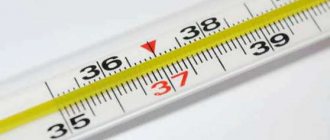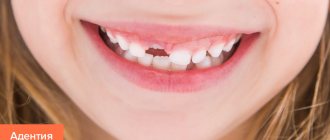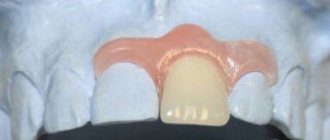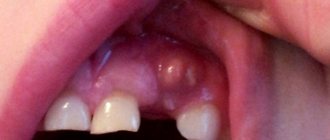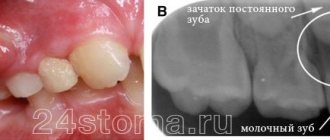When contacting an allergen, it is often the skin that reacts to it first. An inflammatory process on the skin associated with a disorder of the immune response and the body's allergic sensitivity to a pathogen is called dermatitis. Both children and adults are susceptible to it. The disease is manifested by the following symptoms:
- redness of the skin;
- irritation, itching;
- rashes;
- peeling of the skin.
Treatment of allergic dermatitis, in addition to drug therapy, also involves lifestyle correction, in particular nutrition. If clinical diagnostic measures have confirmed this disease in a patient, he must adhere to a specialized diet prescribed by a doctor.
Why do you need a diet for stomatitis?
In patients with severe pain, eating is difficult. The unpleasant sensations are especially pronounced in lesions of an ulcerative-necrotic nature, when the oral cavity has deep lesions. Consult a doctor! The dental clinic will develop a therapeutic program for each patient. When the mouth is in this condition, the patient may refuse to eat, which has a detrimental effect on health. After all, the body spends a lot of energy when it is sick. It is needed to maintain body temperature, the production and release of active agents, and the synthesis of antibodies. That is why it is important to eat right and replenish lost nutrients. However, the diet must be correctly composed; not every product should be included in the menu.
Akriderm GK preparations for allergic dermatitis
The combined composition gives the drug "Akriderm GK" wide application possibilities.[4] It includes topical glucocorticosteroids, which show a high degree of effectiveness in combating the manifestations of atopic and allergic pathologies. These products are a powerful blow to the inflammatory focus, since Akriderm GK preparations contain three active ingredients:
- Betamethasone – has anti-inflammatory, antiallergic, antiexudative and antipruritic effects.
- Gentamicin – has a bactericidal effect.
- Clorimazole – has a pronounced antifungal effect.
Consequently, Akriderm GK ointment and cream have a comprehensive effect on the diseased areas of the skin, contributing to its restoration and improvement of the patient’s condition. The drugs relieve itching, redness and inflammation and help eliminate pathogenic microorganisms. These drugs can be used to treat both acute phase and chronic inflammation. Both ointment and cream are well absorbed into the skin and penetrate deeply into the lesion. For a more accurate choice of the appropriate drug, it is recommended to consult a specialist.
General rules of nutrition for stomatitis
The nutritional rules for this disease are not complicated, but require careful implementation. The set of standards includes:
- Meals should be fractional.
- If you have stomatitis, you can’t eat three times a day, it’s not physiological. With this regime, the gastrointestinal tract is overloaded.
- Food is taken every 3 hours; you need to eat 5-6 times a day.
- Gentle nutrition does not irritate the mucous membrane and does not cause pain.
- Products should be crushed as much as possible. Meat and fish are processed into minced meat, berries and vegetables into puree.
Sour fruits are prohibited, as they provoke the development of bacteria. Increased sensitivity of the mucous membrane does not allow the use of spices and sauces. Alcoholic drinks and pickles are excluded from the menu so as not to provoke pain or discomfort. Bitter and sweet foods should also not be consumed.
Heat treatment
But with stomatitis, you can eat dishes that have been heat-treated. This is not only not harmful to the inflamed oral cavity, such food is beneficial for the whole body. After boiling or stewing, the food should cool down. Its optimal temperature during administration is from 37 to 40 degrees. Slightly warm foods are the same temperature as the body. The priority is vegetable soups, casseroles, and purees. Many delicious dishes can be prepared if you use this culinary method, stewing. You need to avoid foods that are too cold or too hot.
Liquid and semi-liquid food
- For a while you will have to forget about solid food: crackers, nuts, seeds, candies.
- Even fruit compotes and juices must be filtered. This is necessary so that pieces of fruit do not get into the wounds and rot.
- Soft tissues are especially sensitive to dry dishes that contain foods with sharp edges. In order not to cause harm to the inflamed mucous membrane, they should be washed down with water or excluded from the menu.
Remember that solid foods that require careful, long chewing should not be consumed if you have this disease. If you have a strong desire to eat hard food, it needs to be chopped or ground immediately before consumption.
Oral care before and after meals
Dental treatment is the main component of preventing the occurrence of inflammatory processes in the oral cavity. A timely visit to the dentist will minimize complications from caries and will allow you to preserve your incisors, canines, and molars. Hygiene procedures are no less important for health. Mandatory morning and evening cleaning of the chewing organs. To do this, you must choose the right toothpaste and brush. When treating the disease, you need to use a brush with soft bristles.
Each meal should be completed with a thorough cleaning of the oral cavity, that is, rinsing. Consult your doctor which pharmaceutical product is suitable for your case. Antiseptic rinses provide disinfection, relieve inflammation, and do not allow pathological bacteria to multiply. You can rinse your mouth with a solution of soda or warm boiled water.
What can you eat?
There is an opinion that food restrictions and radical reductions in diet can cure dermatitis. In fact, eliminating all potentially hazardous foods may not only be ineffective, but also dangerous to health. A diet low in allergenic foods does improve skin condition, but doctors are extremely careful about developing the right diet for each patient. In addition, there is scientific evidence that the frequency of exacerbations and severity of dermatitis is influenced not only by food, but also by other factors directly or indirectly related to the therapeutic diet. Therefore, when developing diets, doctors propose the following approach to treating the disease:
- Maintaining normal body weight. Among adults who are overweight or obese, the risk of the disease is 29% and 56% higher, respectively, compared with adults of normal weight.[2]
- Prebiotics, probiotics and synbiotics. Research has shown that the use of synbiotics (a combination of prebiotics and probiotics) also has a positive effect on skin health.[3]
- Fatty acids and vitamin D supplements: There is evidence that taking vitamin D and omega acids improves skin conditions in people with eczema. This is due to the fact that these substances have anti-inflammatory activity.
Therefore, if we talk about the correct diet for dermatitis, you need to understand that diet is only part of the treatment. It is important not to get hung up on what you can or cannot eat, but to concentrate on the principles of a healthy lifestyle. Dietary nutrition for dermatitis has its own characteristics, so patients will have to adjust their lives to them. The basic principles include:
- meals 5-6 times a day in small portions;
- exclusion of allergenic foods such as nuts, citrus fruits, chocolate, exotic fruits and foods with dyes and harmful food additives, red vegetables and fruits;
- boiling, stewing, baking or steaming foods;
- reducing salt consumption, avoiding sweets, spices, spicy and fatty foods;
- increasing the volume of fluid consumed to 2-2.5 l;
- daily calorie content of food is at the level of 2500-2800 kcal.
Authorized Products
When following a diet for dermatitis, it is better to bake, boil and stew foods with a minimum of oil. To control your diet, we recommend keeping a food diary in which you write down everything you eat during the day. Patients with dermatitis can freely eat:
- boiled or steamed beef meat, boiled;
- cereal, vegetarian or recycled beef broth soups;
- sunflower and olive oil.
- boiled potatoes;
- buckwheat, rice and rolled oats;
- natural yoghurts without additives;
- fermented milk products - cottage cheese, fermented baked milk, yogurt;
- baked apples;
- dried fruit compotes (except raisins);
- whole grain bread and crispbreads.[1]
Prohibited Products
First of all, it is necessary to completely exclude fried foods, smoked foods, everything spicy and salty, as well as semi-finished meat and fish products from the diet.
To successfully treat dermatitis, patients should eliminate from their daily diet:
- coffee and sweet carbonated drinks;
- alcoholic drinks;
- spices and sauces (vinegar, mustard, ketchup, mayonnaise);
- horseradish, radish and radish;
- hot and sweet peppers, tomatoes, eggplants;
- milk;
- eggs;
- chocolate and chocolate confectionery;
- baked goods, yeast;
- honey;
- fish and seafood;
- poultry and dishes from goose, duck, chicken;
- nuts;
- citrus fruit;
- berries and fruits of red or orange color.[1]
Recommended products for stomatitis
The list of permitted foods and dishes is quite wide.
- Non-acidic natural dairy products will saturate the body with useful minerals, vitamins, and restore the microflora of the oral cavity.
- Fruits and vegetables that do not have a strong taste, that is, those that contain a lot of water (melon, watermelon). They strengthen the immune system.
- Boiled or steamed will saturate the body with protein.
- Vegetable soups are easy to chew and swallow.
- Drink plenty of fluids: clean water, compotes, juices, weak tea.
Suitable cereals include rice, oatmeal, semolina, and buckwheat. In case of exacerbations or extensive erosions, liquid food is taken using a tube. Nutrition for stomatitis in adults involves expanding the diet. Despite the ban on seasonings and spices, sometimes garlic puree or grated horseradish can be included in the menu. Of course, these products are consumed in minimal doses. They are additional agents that help neutralize inflammatory processes. Before using them, you should consult your doctor.
Causes of allergic dermatitis
Allergic dermatitis includes many inflammatory processes on the skin associated with the negative effects of irritants, most often food allergens. Very often, the disease is provoked by certain foods - the pathogen enters the circulatory system through the gastrointestinal tract. It is also worth noting indirect causes that can also cause symptoms of allergic dermatitis. These include:
- genetic predisposition;
- hormonal disorders;
- deficiency of vitamins and minerals in the body;
- unbalanced diet;
- stress and nervous tension;
- mental disorders;
- physical overload;
- autoimmune diseases;
- disruptions in stomach functions.
The environment also influences the development of the disease - in regions with poor ecology there are more patients with this pathology than in areas with a favorable environmental situation.
Features of nutrition of children with stomatitis
The diet for children is compiled depending on the severity of inflammation and the form of the disease. If the pathology is severe, the child should take liquid food. The menu consists of dishes that are rich in microelements and vitamins. This maintains body tone and activates the immune system. You can feed a child with stomatitis purees, jelly, and other baby food products. Their advantage is nutritional value, healthfulness, and pleasant taste. They are soft and easy to swallow.
In the acute phase
During an exacerbation:
- Any irritating foods are excluded: salty, sour, fried, sweet foods are minimized.
- Food should be slightly warm, semi-liquid. This is puree, cottage cheese, yogurt, milk.
- 4 meals a day are provided without additional snacks.
- The child should drink every hour. After medicinal treatment of the oral cavity, you need to wait 30-40 minutes. In addition to water, the menu may include fruit juices that do not irritate the mucous membranes.
If the disease is infectious, the baby is given a separate towel, toys, and dishes. Be sure to regularly ventilate the room where the little one spends time. It is important that parents monitor the health of their child. A timely visit to the dentist will make therapy easier and the recovery process will be faster. If periodontal tissues are damaged, periodontology can cope with their pathologies: diseases of the root system of units, bleeding gums, inflammation of the ligamentous apparatus of the masticatory organs.
During the recovery period
When the acute phase has passed, the diet expands.
- They select not only neutral-tasting vegetables and fruits, but also slightly acidic and slightly sweet ones.
- It is no longer necessary to wipe food, but it is still too early to eat rough food.
- The menu includes carrot and cabbage juices.
- Poultry meat is used to prepare meatballs and steamed cutlets, lightly salted.
- You can add bay leaf to the broth. This accelerates the healing of the mucous layer.
After the disease is cured, it is necessary to show the child to the dentist. He will give additional advice and instructions on preventing relapses of the disease.
Diet for adults
If there is a food allergy confirmed by clinical diagnostic studies, the doctor prescribes a specialized diet, focusing on the patient’s medical history and individual characteristics. But there is also a non-specific hypoallergenic diet approved by Russian doctors.[1] It can be followed regardless of the nature of the allergen to reduce the load on the body and speed up recovery.
This diet is based on excluding any potentially allergenic foods from the daily menu, minimizing the risk of exacerbations. According to the degree of allergenicity, all products can be divided into:
- highly allergenic;
- moderately allergenic
- low-allergenic.
The ideal diet is one from which foods from the first two groups are completely excluded. If the diet consists primarily of low-allergenic foods, this can significantly improve the patient’s condition and help recovery. When prescribing therapeutic nutrition, the doctor focuses on the nutritional value of foods, so a person following a hypoallergenic diet will not overeat or starve. The specialist also gives recommendations regarding thermal processing of products in order to preserve nutrients as much as possible.
